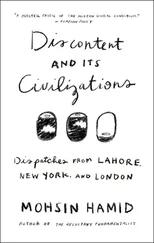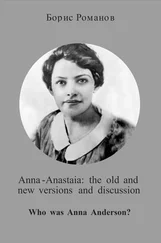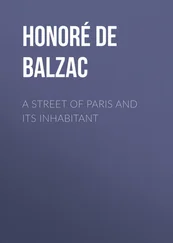Henry Edwards - Old and New Paris - Its History, Its People, and Its Places, v. 1
Здесь есть возможность читать онлайн «Henry Edwards - Old and New Paris - Its History, Its People, and Its Places, v. 1» — ознакомительный отрывок электронной книги совершенно бесплатно, а после прочтения отрывка купить полную версию. В некоторых случаях можно слушать аудио, скачать через торрент в формате fb2 и присутствует краткое содержание. Жанр: foreign_antique, foreign_prose, Путешествия и география, на английском языке. Описание произведения, (предисловие) а так же отзывы посетителей доступны на портале библиотеки ЛибКат.
- Название:Old and New Paris: Its History, Its People, and Its Places, v. 1
- Автор:
- Жанр:
- Год:неизвестен
- ISBN:нет данных
- Рейтинг книги:4 / 5. Голосов: 1
-
Избранное:Добавить в избранное
- Отзывы:
-
Ваша оценка:
- 80
- 1
- 2
- 3
- 4
- 5
Old and New Paris: Its History, Its People, and Its Places, v. 1: краткое содержание, описание и аннотация
Предлагаем к чтению аннотацию, описание, краткое содержание или предисловие (зависит от того, что написал сам автор книги «Old and New Paris: Its History, Its People, and Its Places, v. 1»). Если вы не нашли необходимую информацию о книге — напишите в комментариях, мы постараемся отыскать её.
Old and New Paris: Its History, Its People, and Its Places, v. 1 — читать онлайн ознакомительный отрывок
Ниже представлен текст книги, разбитый по страницам. Система сохранения места последней прочитанной страницы, позволяет с удобством читать онлайн бесплатно книгу «Old and New Paris: Its History, Its People, and Its Places, v. 1», без необходимости каждый раз заново искать на чём Вы остановились. Поставьте закладку, и сможете в любой момент перейти на страницу, на которой закончили чтение.
Интервал:
Закладка:
The governor, De Launay, had already prepared his defence; and in addition to the guns of position in the towers, he had placed a number in the interior courtyard. The gates and the outer walls had been loopholed and armed with wall-pieces, and a quantity of paving-stones, cannon-balls, and lumps of iron had been carried up to the towers, in order to be hurled down upon the heads of the expected assailants.
The garrison consisted only of 114 men, 32 of whom were Swiss, while the other 82 were old pensioners. The defenders, indeed, were nearly all of them aged, but experienced, soldiers. Their material appliances and the strength of their position were such that the governor looked upon the fortress as impregnable against a mob of people who had neither the art nor the time to undertake regular siege operations. With his powerful batteries, De Launay could lay the whole quarter in ruins; and foreseeing this possibility, the committee of the Hôtel de Ville sent a deputation to the governor, promising not to attack him if he would withdraw the cannon, and promise not on his side to begin hostilities. A man of more energy, Thuriot de la Rozière, called, in the name of his district, upon the governor, and demanded the surrender of the fortress. His account of what was taking place in Paris astonished De Launay, and gained the sympathy of the French portion of the garrison. His final demand was that the Bastille should be occupied by some of the newly-formed bands conjointly with troops of the regular army. But this proposition, though more advanced than the feeble one made by the committee of the Hôtel de Ville, was by no means on a level with popular demands; and Thuriot, on leaving the Bastille, was threatened by the armed bands assembled outside, who demanded, not the occupation of the Bastille, but its destruction.
A few brave men got into the outer yard through the roof of the guard-house, and at once destroyed with hatchets the chains of the drawbridge leading to the inner yard. They were followed by others, and soon the outer gates were forced. A terrible fire had been opened on the crowd of assailants, and it was resolved once more to approach De Launay by means of a deputation, which, however, was unable to reach him. At this moment the besiegers set fire to several carts of hay and manure, in order to burn the buildings which masked the fortress and to smoke out the defenders. At the same time, a constant fire was kept up from the windows and roofs of the neighbouring houses. All this, however, had but little effect on the garrison. A new deputation was now sent forward, bearing a white flag. A white flag was displayed in reply from the Bastille, and the soldiers reversed their muskets. An officer of the Swiss troops passed forward a note, by means of a crane, with these words: “We have twenty thousand pounds of powder, and we will blow up the fortress and the whole of the neighbourhood unless you accept a capitulation.”
The Commissaries of the Hôtel de Ville, believing in the pacific demonstrations of the garrison, were already urging the people to retire, when suddenly there was a discharge of musketry from the fortress, which laid low a good number of the insurgents. It was apparently the Swiss who had fired, heedless of the conciliatory attitude assumed by the French portion of the defending force. The whole garrison was held responsible for this act of treachery. The exasperation of the people had now gone beyond all bounds, and there was but one cry heard: “Down with the Bastille!” A number of the French guards seized five of the guns which had been brought from the Invalides, and pointed them at the fortress. The fire of the artillery proved more effective than that of the musketry, and the drawbridge was now swept by cannon-balls.
Meanwhile, the garrison was divided against itself. The pensioners wished the contest, of which the end could now be foreseen, to cease, whereas the Swiss mercenaries, careless about the effusion of French blood (and, it must be admitted, full of a more youthful courage), were determined to resist to the last.
There was another reason which made it unadvisable to prolong the defence. The fortress contained abundance of ammunition, but little or no food; and the numbers, constantly increasing, of the besiegers rendered it impossible to renew the supply. It was evident that all Paris demanded the fall of the Bastille. The Swiss, however, would hear of no surrender. As for De Launay, he felt that he was personally detested, not only for the blood he was uselessly shedding, but even more for his persecution of the prisoners under his charge. The Memoirs of Linguet and other revelations had made his name odious throughout Europe. Thus the vengeful cries of the people seemed directed against himself personally. Wild with terror, he seized a match, and was about to explode his powder magazine, when two non-commissioned officers drove him back at point of bayonet. Outside, a sort of organisation had now established itself. Many bands of volunteers had been moving together since the first uprising, with the volunteers of the Palais Royal, under Camille Desmoulins, among them. These bands were under the command of officers of the French Guards, or of energetic men who were afterwards to distinguish themselves in the military career.
According to some accounts, the surrender of the fortress took place immediately after the episode of the note thrust forward on a crane, or, according to another version, pushed through a loophole. The moment in any case arrived when, promised by some of the French Guards that their lives should be spared, the garrison agreed formally to surrender. The drawbridges were now lowered, and the Bastille was occupied in force. On being recognised, De Launay was arrested and led off towards the Hôtel de Ville. Hulin, afterwards one of Napoleon’s generals and nobles, took charge of the prisoner, and, forming an escort, did his best to convey him safely through the infuriated mob, which, with execrations, pressed towards him from all sides. More than once De Launay was thrown down. Having lost his hat, he was now an easier mark than ever for the assaults of the crowd. That he might not so readily be distinguished, Hulin gave him his own hat, thus running the risk of being himself mistaken for the odious governor. At last Hulin and several members of the escort were thrown together to the ground; and when Hulin managed to rise, the head of the hated governor was being carried aloft on the point of a pike.
Within the Bastille the invaders were, meanwhile, breaking open the dungeons. Only seven prisoners, however, were found, two of whom had become insane. One of the latter had a long white beard falling to his waist, and fancied himself still under the reign of Louis XV., who had been dead fifteen years. Instruments of torture were discovered. Shocking as this detail may be to a reader of the present day, it should be remembered that under the old monarchy torture was constantly employed in criminal process. It is only just to add that it was formally abolished a few years before the Revolution, and not afterwards, as is generally supposed.
The archives of the prison were in part destroyed. All that was preserved of them was afterwards published, in order once more to throw light on the iniquity of the system under which such an institution as the Bastille could exist.
The taking of the Bastille cost the assailants eighty-three killed on the spot, and fifteen who died from their injuries, besides sixty-three wounded. The garrison, on their side, protected by the walls of the fortress, lost but one killed and one wounded during a struggle which lasted five hours.
The major of the garrison, De Losme, shared the fate of the governor, except that, instead of being put to death summarily by an enraged mob, he was taken deliberately to the famous lanterne , or lamp of the Place de la Grève, and hanged. Two of the pensioners, accused, like the major, of having pointed the guns of the fortress against the people, were also strung up. These were the first victims of the cry “ À la lanterne! ” afterwards to be heard so often in the streets of Paris. The lanterne in question was attached to an iron gibbet; and it was on this gibbet that the victims of popular fury were hoisted aloft.
Читать дальшеИнтервал:
Закладка:
Похожие книги на «Old and New Paris: Its History, Its People, and Its Places, v. 1»
Представляем Вашему вниманию похожие книги на «Old and New Paris: Its History, Its People, and Its Places, v. 1» списком для выбора. Мы отобрали схожую по названию и смыслу литературу в надежде предоставить читателям больше вариантов отыскать новые, интересные, ещё непрочитанные произведения.
Обсуждение, отзывы о книге «Old and New Paris: Its History, Its People, and Its Places, v. 1» и просто собственные мнения читателей. Оставьте ваши комментарии, напишите, что Вы думаете о произведении, его смысле или главных героях. Укажите что конкретно понравилось, а что нет, и почему Вы так считаете.












